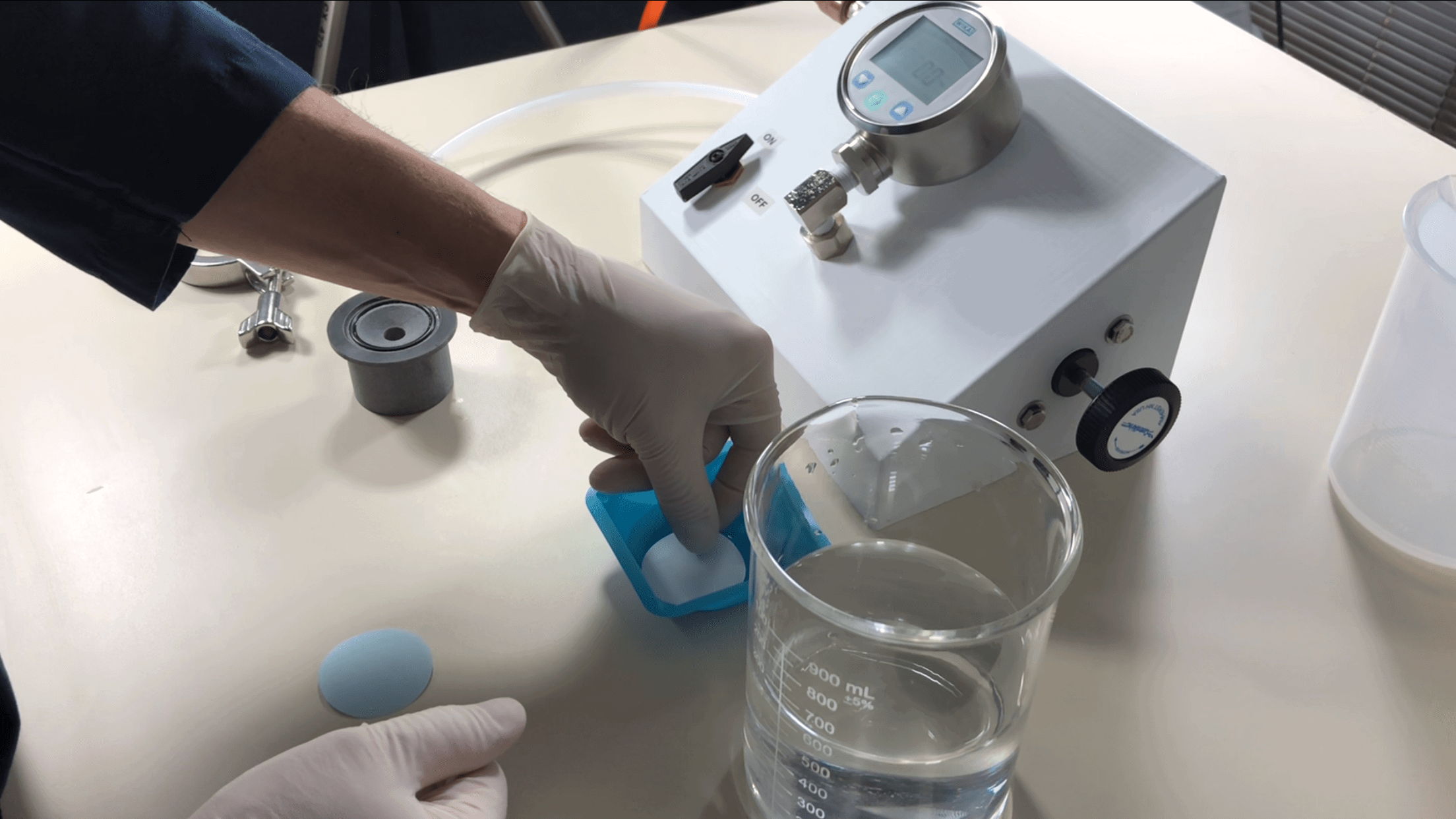Defining Pore Size Through Bubble Point Test | Whitepaper

Pore size rating is among the key selection criteria for membrane filters as it indicates the extent of particle size (including microorganisms) that can effectively be retained in a filtration application. With its importance, manufacturers are compelled to provide pore size ratings as accurately as possible.
For such purpose, bacterial and particle challenge testing methods are used to accurately define pore sizes of membrane filters. However, these methods have proven to be destructive to the filters, require complex apparatus, and are arduous to perform.
The Bubble Point Test method substantially addresses the issues of the challenge testing methods. Indeed, its desirable properties allowed its use to gain favor with the different manufacturers to define membrane pore sizes. It is generally non-destructive to the filter, and simple and quick to perform.
In this whitepaper, we take a closer look at the simple yet clever principle behind bubble point testing and how it became the widely preferred method in the membrane industry. We also explore some of its limitations, which can be attributed to the simple principle it adopts to overcome the drawbacks of the challenge testing methods.
For better method comparison, we briefly discuss the bacterial challenge test and the particle challenge test in this whitepaper, including their key features and their limitations.
To learn more about the Bubble Point Test, download now our whitepaper.
- Most Viewed Blog Articles (5)
- Company News (285)
- Emerging Technologies (64)
- Microbiology and Life Science News (93)
- Water and Fluid Separation News (97)
- Filtration Resources (93)
- Product News (19)


![Join Sterlitech at BIO 2024 [Booth #5558]: Exploring the Future of Biotechnology](https://www.sterlitech.com/media/blog/cache/300x200/magefan_blog/b4.jpeg)



